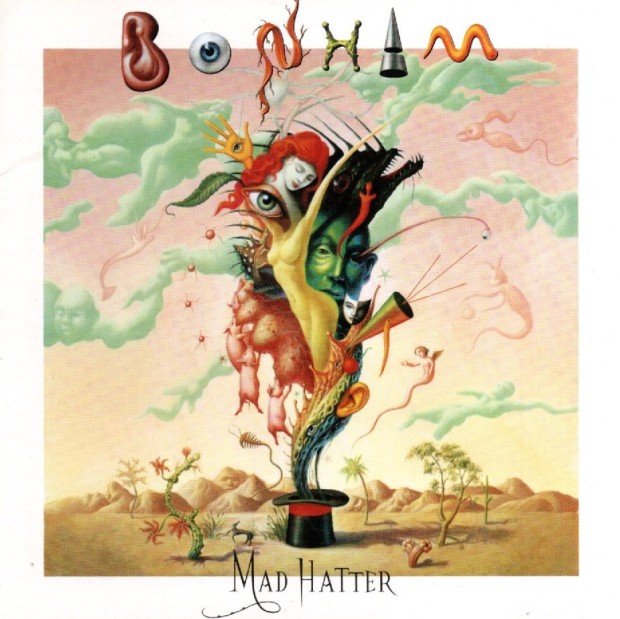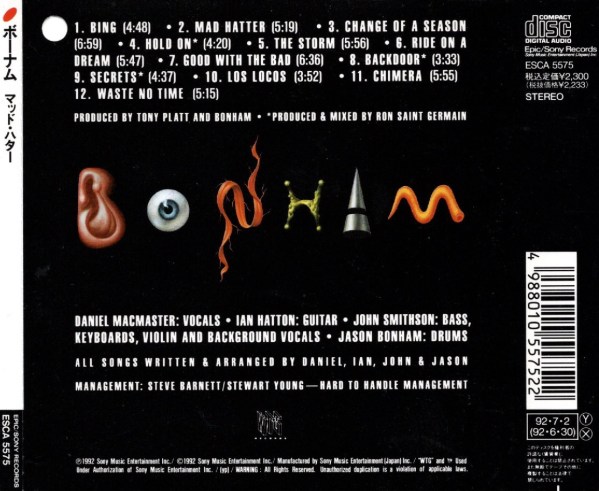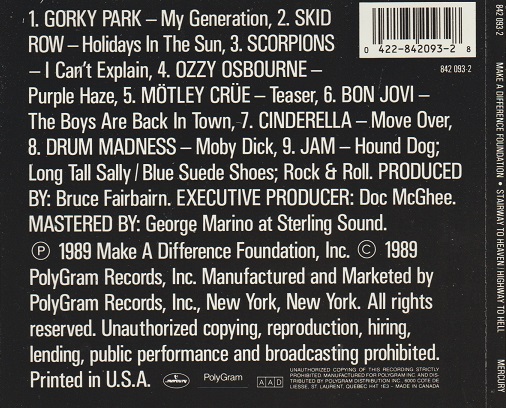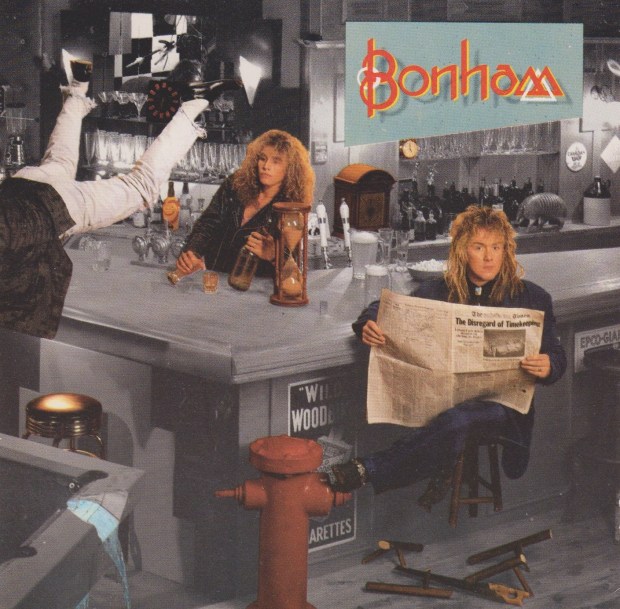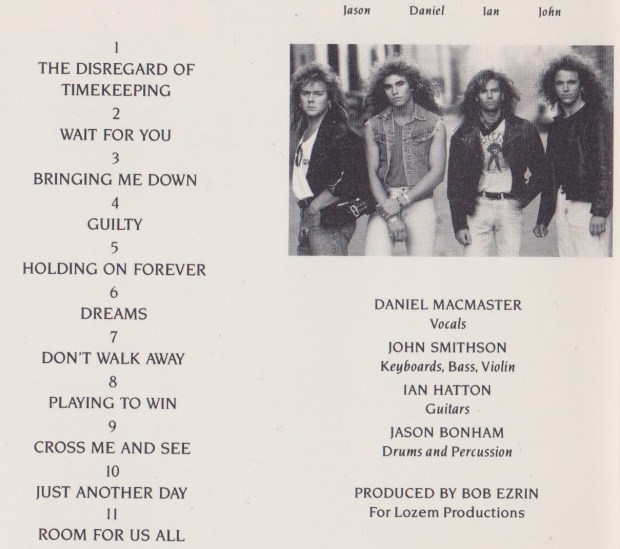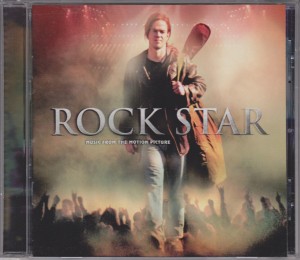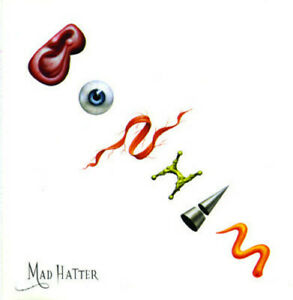 BONHAM – Mad Hatter (1992 Sony Japan)
BONHAM – Mad Hatter (1992 Sony Japan)
The first Bonham album in 1989 was a critic’s darling. Produced by Bob Ezrin, it sold well enough and made plenty of year-end lists. For the year 1989, it was a breath of fresh air compared to the Motley Crue, Bon Jovi and Def Leppard tracks dominating the airwaves. Those who thirsted for the rarified air of Led Zeppelin got some of that with Jason on drums and the incredible Canadian Daniel MacMaster on lead vocals. It was easy to imagine that “Wait For You” was a new Zeppelin single built for that year. But every band has to grow, and where would Bonham take it? Further down the Zeppelin road, or try and find their own identity?
Bob Ezrin did not return, and most of the followup album Mad Hatter was produced by Tony Platt, with the rest produced by Ron Saint Germain. The band grew from the debut, establishing more of their own groove. It was a more diverse and challenging platter. Unfortunately, the album arrived in 1992, amidst the Pearl Jams, Soundgardens, Nirvanas and the rising tide of grunge. Despite the strong single “Change of a Season”, the album tanked.
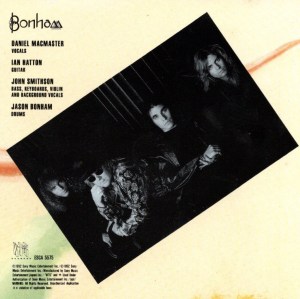 What an opener “Bing” is, a word that doesn’t seem to be in any of the lyrics. At first, it has a very old school Zeppelin groove, akin to “Candy Store Rock” meets “Black Dog”. But then it goes to a completely different place on the chorus. The sonics are clearer and sharper than the debut. Jason’s drums are huge as the should be.
What an opener “Bing” is, a word that doesn’t seem to be in any of the lyrics. At first, it has a very old school Zeppelin groove, akin to “Candy Store Rock” meets “Black Dog”. But then it goes to a completely different place on the chorus. The sonics are clearer and sharper than the debut. Jason’s drums are huge as the should be.
Yet it’s the title track that really shocks the system. Opening with a blast of horns, “Mad Hatter” goes one of the few places Zeppelin never went: full-on funk with horns. This would be the Tower of Power horn section. It would be lazy to compare “Mad Hatter” to “Get the Funk Out” from a couple years past, as it has its own vibe. Ian Hatton on guitar proves himself to be diverse talent with licks-o-plenty.
Another direction is explored on “Change of a Season”, the shoulda-woulda-coulda single that would have been huge a year or two prior. The melancholy ballad was simply the wrong temperature for 1992. The gothic tone of the video was cool, but the video got zip for airplay. It’s the backing strings (synth) and epic chorus that make this song. It sounds less like Zeppelin and perhaps more like something from David Coverdale’s Reptile Emporium.
Another cool direction is explored on “Hold On”, a unique song with elements from multiple genres. Funk, soul, progressive, blues, and even bluegrass. This is followed by another song with epic overtones, “The Storm”, a six minute track that takes the Zeppelin influences to the craggy progressive peaks of another land.
Although there’s no side break on a CD, there are a natural place for it as you can pause for a breath before plunging into “Ride on a Dream”. A breaknace pace and metallic riff make it unlike anything else on the album. Perhaps a band like the Scorpions could do “Ride on a Dream”, but even Klaus would be challenged by the outstanding MacMaster lead vocal. This plutonium-fuelled track would give anyone a run for their money.
But after all that drama, you need something a little more laid back. That would be “Good With the Bad”, a jazzy piano ballad and the longest song on the album. It doesn’t remain in ballad territory forever, going to the swamps of Florida where Savatage reside halfway through. The comparisons are easy to hear. Next, we go to a bluesy, funky blast of Zeppelin-flavoured ale on “Backdoor”. Another cool tune with a different vibe from the others. Things drag a bit on “Secrets”, which tries to marry the funky side with a “Kashmir”-scale chorus but doesn’t really follow through.
Moving on to the end, it’s “Los Locos” in second to last position. This is a tender blues guitar/violin instrumental with dark piano accents. That would be bassist John Smithson handling those wicked violin licks and a lot of the keyboards. Perfect track for this spot, setting up for the closer. It’s up to “Chimera” to take you out, and it does with a shiny upbeat vibe. Although it’s probably sheer coincidence, it sounds a bit like Marillion circa the same period.
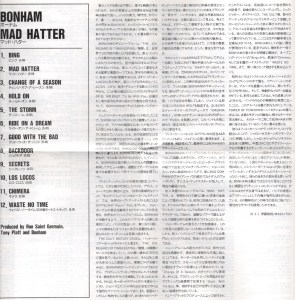 Lo and behold, that is not all! The Japanese fans got a little bonus on their CDs called “Waste No Time”. It’s definitely not an also-ran. It has a heavy bass groove that isn’t like the other tracks on the album. MacMaster really lets it blast on the chorus too. Definitely Zeppelin vibes come solo time.
Lo and behold, that is not all! The Japanese fans got a little bonus on their CDs called “Waste No Time”. It’s definitely not an also-ran. It has a heavy bass groove that isn’t like the other tracks on the album. MacMaster really lets it blast on the chorus too. Definitely Zeppelin vibes come solo time.
This album was available with two covers. The majority of copies have the surreal Dali-esque landscape that you see here. The alternate cover was plain white with just the new Bonham logo. Which looks rather silly without the proper cover art for context. That’s the cover that retailers such as Columbia House sold in the 1990s.
In 1994, Jason Bonham reconvened with Ian Hatton and John Smithson, but not Daniel MacMaster. The new singer was Marti Frederiksen — yes, that Marti Frederiksen, the one that writes massive hits for everyone today. The band took on a new modern grunge sound, and renamed themselves Motherland. ☮︎ For Me was the pretentious name of that album. As a sad final coda, Daniel MacMaster died too young at age 39 from a strep infection that he thought was a cold.
At least we can say that Bonham with MacMaster really did outgrow the Zeppelin tag by the second album. Still a part of the DNA, but expressing itself more rarely. It’s a shame about the timing of the album, because had it sold like the first one did, maybe we wouldn’t have had the Motherland debocle. Mad Hatter is a pretty fine second album that does all the things that second albums should do. Shame it was the last.
3.75/5 stars
